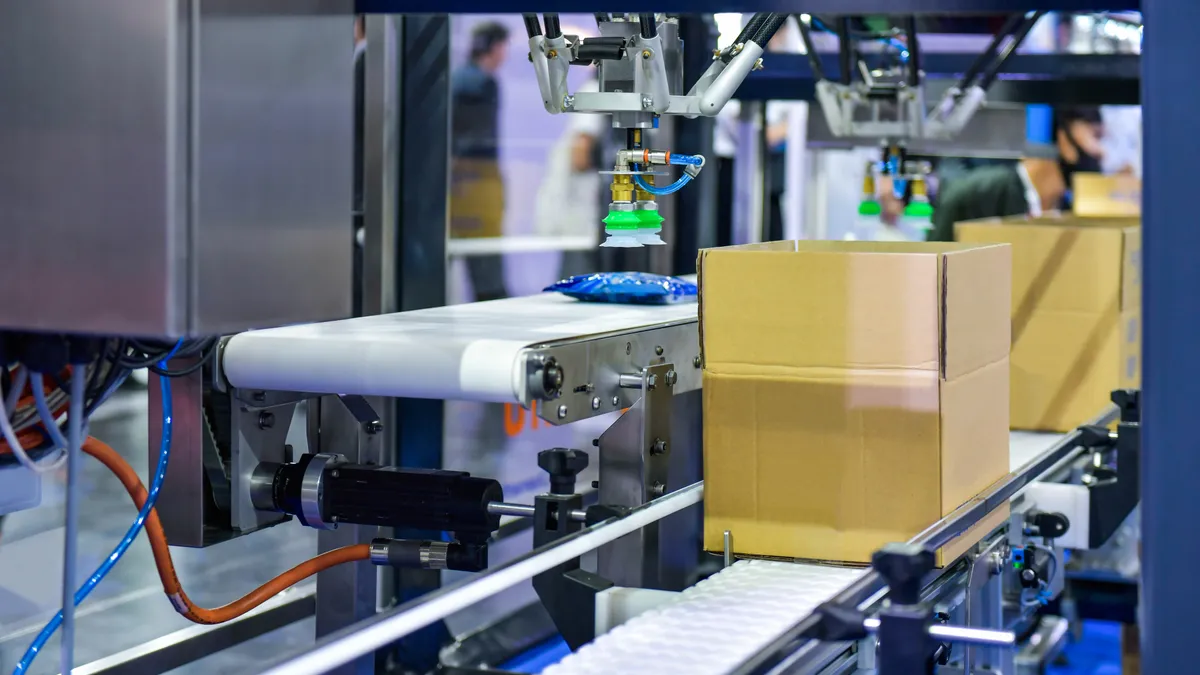Packaging constraints are the latest supply chain wrinkle for companies as the pandemic, weather events and increased demand for sustainable materials stress supply.
“It’s almost like the perfect storm,” said John Blake, senior director analyst with the Gartner Supply Chain practice, with the latest round of thunder coming from the recent COVID-19 lockdowns in Shanghai.
Packaging supply is expected to remain tight through the 2022 holiday season, Blake said. Procurement managers have options to alleviate the pressure by working more closely with suppliers, adding supply chain resilience and sourcing months instead of weeks ahead.
Forest-related products —such as corrugated boxes, non-corrugated boxes and folding boxes — present differing challenges for supply chains, said Derek Mahlburg, director of North American paper and packaging at Fastmarkets RISI.
Whereas corrugated boxes have been hard to source given the surge in e-commerce since the start of the pandemic, Mahlburg noted that they should be easier to get in the next six months as production finally catches up to demand. In the meantime, “buyers will probably have to continue to explore all the ways they can to source paper and packaging products,” he said.
Mahlburg suggested that managers speak directly with mills to find out what they are already producing, “instead of calling around to see who can actually fit in an order of this special grade.” Doing so can help procurement teams find a sourcing solution, even if it’s not as custom-made as they’d like, he said.
Coordinating with suppliers can also help procurement managers adjust their packaging order designs based on what a vendor can realistically provide. For example, eliminating multi-color graphics can make production less complex for a vendor, and help the order receive higher priority, Blake said.
If packaging requires multiple color stations and therefore extra work and downtime for packaging converters, it can make the process more labor intensive for suppliers. “Just understanding what we can do to make it easier for our suppliers to provide our orders for us” can be the difference between less colorful but still effective packaging, or no packaging at all, Blake said.
"If you’re going to have a factory shut down in one spot, you still have the material you need to source both the product and the packaging materials."

Tom Egan
Vice President of Industry Services at PMMI, the Association of Packaging and Processing Technologies
While just in time delivery worked when supply chains were "normal," they don’t work in the face of continued volatility, said Tom Egan, vice president of industry services at PMMI, the Association for Packaging and Processing Technologies. Building resilience in a supply chain can help.
“If you’re going to have a factory shut down in one spot, you still have the material you need to source both the product and the packaging materials,” Egan said. “That change toward a resilient supply chain is something that’s here to stay for quite a while.”
Segmentation can give companies a strategic view of their supply needs and help reinforce that resilience.
“We lose sight of the implications of our total portfolio. By segmenting, we can look at how we utilize a certain material or format across our entire portfolio to see where we can consolidate, harmonize or standardize specifications,” Blake said.
While some segments, like corrugated boxes, could improve in the next six months, lead times are still long, and Blake said he doesn’t anticipate any kind of normalcy in the packaging supply chain until at least 2023, if not later.
“Currently we’re seeing six months [lead time] where it used to be four to six weeks,” he said. “Things like labels have 12 to 16-week lead times, where it used to be four to six.”
While Egan suggests working with suppliers to build in longer lead times, delays can persist, especially for sustainable packaging. For example, companies that want to move from a multi layered bottle to a monolayered one that can be more easily recycled are having a difficult time sourcing the right product, Egan said.
“That is leading to difficulties in being able to get almost any type of material that we use as primary packaging materials," he said.
Companies should talk to their suppliers now about their forecasts for the next four to six months, so that organizations can know where they can fit in the production schedule.
“It’s a very specific and clear example of where that communication can alleviate some of those [issues] and help the supply chain work a little bit better," Egan said.














